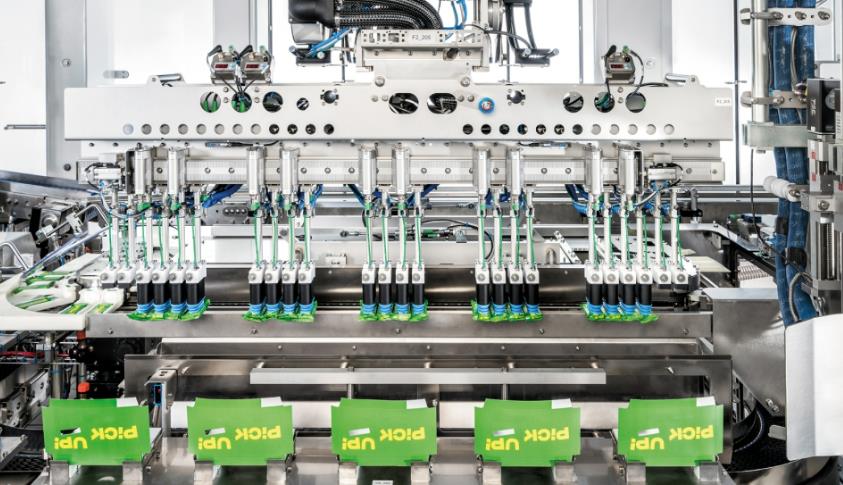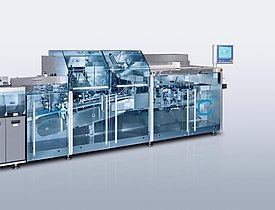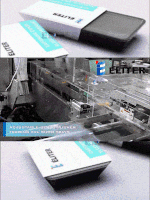Automatic Cartoning Machine | Industry Review, Packaging Insights, Machine Market
When you open a box of snacks and admire the perfectly folded packaging, you might wonder whose skilled hands crafted it so precisely. In reality, this is the work of an Automatic Cartoning Machine. These machines, which replace manual cartoning, are widely used in industries such as food, pharmaceuticals, and cosmetics. They automate the process of inserting products into folded cartons and completing the closing action. Some advanced models also feature additional functions such as applying sealing labels or performing heat shrink wrapping.
 Top Load Cartoning
Top Load Cartoning
From: Syntegon
The automatic cartoning machines can be divided into vertical cartoning machines and horizontal cartoning machines based on their structure. Among them, vertical cartoning machines can further be classified into automatic and semi-automatic. Vertical cartoning machines generally have a faster packaging speed, but their packaging range is relatively small, making them suitable for a narrower range of products. On the other hand, horizontal cartoning machines cater to a broader range of products, including pharmaceuticals, food, hardware, and cosmetics. They are characterized by a higher degree of intelligence compared to vertical cartoning machines and can perform more complex tasks such as folding instruction leaflets and printing batch numbers.
 Latest Cartoning Technology
Latest Cartoning Technology
From: ELITER
Regardless of the type of automatic cartoning machine, their work process can generally be divided into the following steps: box feeding, box opening, product filling, batch number printing, and box closing. Simply put, the process involves using a suction cup to pick up the box from the feeding inlet and place it onto the main conveyor line, then opening the box and moving it to the filling area for product insertion. Finally, the relevant mechanism pushes the box into the left and right guide rails to perform the box closing action. Although box closing is the final step, it is a very critical one, as the quality of the box closing directly affects the finished product’s packaging.
The Emerging of Automatic Cartoning Machine
In the early years, the packaging of food, medicine, daily chemicals, and other industrial products primarily relied on manual processes. However, with the rapid development of industry and increasing consumer demand, mechanized packaging was gradually adopted to ensure quality and enhance efficiency. This transition significantly reduced the need for manual labor in packaging, improving both packaging quality and production efficiency.
As a type of packaging machinery, automatic cartoning machines have gradually gained popularity among an increasing number of enterprises.

Uhlman cartoner capable of 150 cartons per minute
From: Wikipedia
Why Automatic Cartoning Machines are Getting Popular?
From the perspective of various countries’ development strategies, the advancement of smart manufacturing is extremely important for national economic development. Whether it is Germany’s Industry 4.0, the United States’ Industrial Internet, or China’s Made in 2025 initiative, these long-term manufacturing development plans have driven transformations in the manufacturing sector. These changes have significantly elevated manufacturing standards and directly contributed to the widespread adoption of automatic cartoning machines in enterprise production.

ADCO Manufacturing Cartoning Machine
Find more: ADCO Manufacturing
Increasing Market Demand
From the perspective of various countries’ development strategies, the advancement of smart manufacturing is crucial for national economic development. Whether it is Germany’s Industry 4.0, the United States’ Industrial Internet, or China’s Made in 2025 initiative, these long-term manufacturing development plans have driven significant transformations in the manufacturing sector. These changes have notably elevated manufacturing standards and directly contributed to the widespread adoption of automatic cartoning machines in enterprise production.
Reduced Labour Costs
Machines can operate 24 hours a day, and with regular maintenance, they can continue production with minimal interruptions. A production line using automatic cartoning machines typically requires only one or two operators, significantly reducing labour costs. Moreover, due to the mass production capabilities of these machines, the products they produce are more consistent in quality, with minimal variation.
Increased Production Efficiency
Automatic cartoning machines complete packaging tasks within a fixed time frame, allowing for precise calculation and control of production costs. Additionally, because the time required for each packaging task is constant, efficiency is relatively higher. This consistency reduces the pressure on related positions, leading to better management and streamlined operations, ultimately generating more profit for the enterprise.
Enhanced Safety
Manual cartoning can lead to errors and fatigue, increasing the risk of workplace injuries. In contrast, automatic cartoning machines operate with high precision and stability, requiring fewer personnel and ensuring a safer working environment. This reduces the likelihood of accidents, contributing to safer and more civilized production processes in enterprises.

CAMA Group Cartoning Line
From: CAMA Group
Market Prospects of Automatic Cartoning Machines
The market prospects for automatic cartoning machines are very promising due to several key factors:
- Rising Demand for Automation: As industries strive for higher efficiency and productivity, there is an increasing demand for automated solutions. Automatic cartoning machines cater to this need by reducing manual labor, minimizing errors, and speeding up production processes.
- Growth in Various Industries: Sectors such as pharmaceuticals, food and beverages, cosmetics, and hardware are experiencing significant growth. These industries require efficient and reliable packaging solutions to meet their high production volumes, which bodes well for the demand for automatic cartoning machines.
- Technological Advancements: Continuous innovation in machine technology, including improvements in speed, precision, and versatility, is enhancing the appeal of automatic cartoning machines. Advanced features like the ability to fold instruction leaflets, print batch numbers, and handle a variety of product types make these machines more attractive to businesses.
- Regulatory Compliance: Increasing regulatory requirements for product packaging, especially in the pharmaceutical and food industries, necessitate the use of sophisticated packaging equipment. Automatic cartoning machines help companies comply with these regulations by ensuring consistent and accurate packaging.
- Global Market Expansion: With globalization, companies are expanding their operations to international markets. This expansion drives the need for high-quality packaging solutions that can meet diverse standards and requirements across different regions.
- Consumer Demand for Convenience: The growing consumer preference for well-packaged and easy-to-handle products is pushing manufacturers to adopt advanced packaging solutions. Automatic cartoning machines help in producing aesthetically pleasing and functionally superior packaging, thereby enhancing customer satisfaction.
- Sustainability and Efficiency: Modern automatic cartoning machines are designed to be more energy-efficient and sustainable, reducing waste and lowering production costs. This aligns with the global push towards sustainable manufacturing practices, making these machines more attractive to environmentally conscious businesses.
Recommended Readings:
Innovative Engineering and Design of Automatic Cartoning Machine




